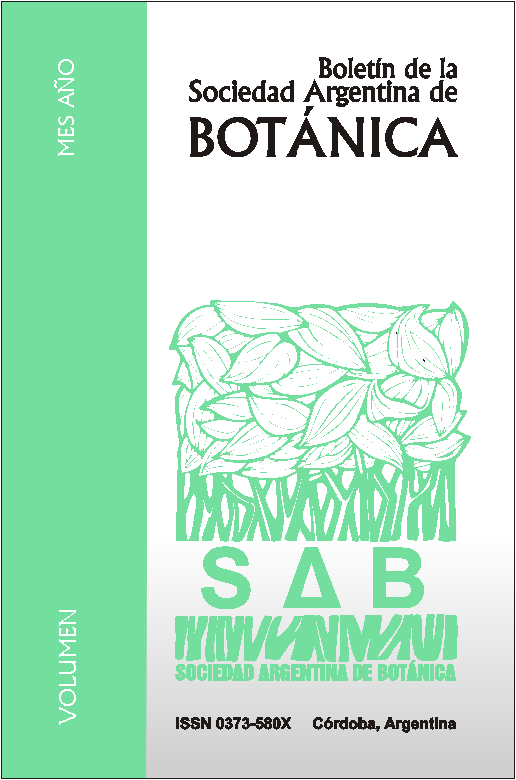Impacts of fragmentation on floristic composition of swamp forests in south-central Chile.
DOI:
https://doi.org/10.31055/1851.2372.v53.n2.20584Keywords:
Edge zone, core zone, richness, native species, non-native species, anthropogenic matrix, fragment size.Abstract
Impacts of fragmentation on floristic composition of swamp forests in south-central Chile. The swamp forests of south-central Chile have been greatly altered by the fragmentation of the landscape, which is mainly derived from anthropogenic activities. Despite their high ecological and conservation value for the biodiversity, these ecosystems have been scarcely studied. The main goal of this study was to evaluate the richness of vascular plants in different fragments of swamp forests in the Araucanía region (38° S, Chile). A total of 11 fragments were studied, in which edge and core zones were defined. Floristic transects were established, and we recorded and identified all species of vascular plants. Differences in the floristic composition between the edge and the core zones were determined, and we performed a GLM to model the response of species richness according to the area of the fragments and the geographical origin of the plants. A total of 123 species of plants were found across all fragments, of which 76 were native and 47 were non-native species. The floristic composition differs significantly between edge and core zones, and the GLM revealed that species richness is influenced by the area of the fragments and the geographical origin of the plants. Our study concludes that the size of the fragments, as well as by the characteristics of the surrounding matrix are fundamental variables that influence the floristic composition of swamp forests in south-central Chile.Downloads
Published
Issue
Section
License
Provides immediate and free OPEN ACCESS to its content under the principle of making research freely available to the public, which fosters a greater exchange of global knowledge, allowing authors to maintain their copyright without restrictions.
Material published in Bol. Soc. Argent. Bot. is distributed under a Creative Commons Attribution-NonCommercial-ShareAlike 4.0 International license.





